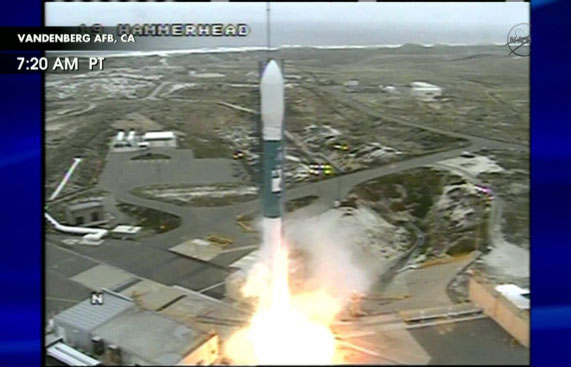Successfully launch satellites to measure ocean salinity
Argentina's National Space Commission (CONAE) and the US Aerospace Agency (NASA) successfully launched the SAC-D Aquarius scientific satellite from the launch pad at Lompoc in the US state of California.
During three years of operation, the SAC-D Aquarius will continually revolve around the Earth at an altitude of 657km.
Each week, satellite-based devices will measure the surface salinity of all oceans, including areas that have never been measured. It is expected that within two months, these devices will provide more information about seawater salinity than what the ocean industry learned in the past 125 years.

SAC-D Aquarius satellite launched (Photo: Foxnews)
This is the fourth generation satellite developed by the state-owned Argentina Invap technology company since the 1990s, but CONAE said SAC-D is the first product to meet the Plan's criteria. National Argentina 2004-2015.
The most important scientific device on SAC-D is Aquarius provided by NASA. In addition to the ability to measure salinity, this device can also measure color, temperature, wind, precipitation, evaporation of seawater, helping scientists better understand the relationship between ocean currents and currents. active period of global sea waters.
Argentina contributes five of the seven devices including microwave and micrometer (MWR) to measure rainfall and wind fluctuations on the Earth's surface, an infrared camera (NIRST) for measuring temperature, collecting systems. Data collection is tasked with synthesizing meteorological and environmental information, modular testing of positioning technology (GPS) as well as satellite speed measurement for space missions, a camera has High sensitivity to measure urban brightness, information about storms and aurora phenomena.
- India successfully launched seven satellites into orbit
- China secretly launched ocean surveillance satellite?
- NASA decided to decipher the mystery of the ocean
- Iran launches the satellite as tensions are rising
- Europe has successfully launched two telecommunications satellites
- India successfully launched homemade satellites
- Is sea water more salty?
- Iran launched 3 satellites in the next 6 months
- Argentina successfully launched the second self-made geostationary satellite
- China successfully launched Tu Nguyen 3 satellite
- SpaceX successfully launched the top secret Zuma satellite into orbit with the Falcon boosters 9
- Iran is preparing to launch 2 homemade satellites into orbit
 Van Allen's belt and evidence that the Apollo 11 mission to the Moon was myth
Van Allen's belt and evidence that the Apollo 11 mission to the Moon was myth The levels of civilization in the universe (Kardashev scale)
The levels of civilization in the universe (Kardashev scale) Today Mars, the sun and the Earth are aligned
Today Mars, the sun and the Earth are aligned The Amazon owner announced a secret plan to build a space base for thousands of people
The Amazon owner announced a secret plan to build a space base for thousands of people